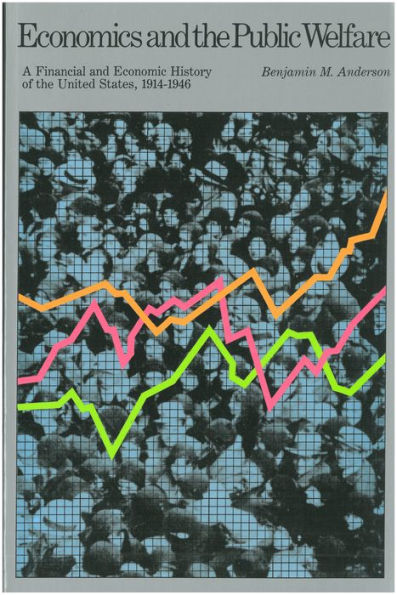Table of Contents
Foreword, by Arthur Kemp 9
Preface 13 PART I: WORLD WAR 1
1. The Prewar World, 1913 21
2. The Outbreak of the War in 1914 25
3. The War Prosperity 36
4. Our War Economic Policy 44
5. The Federal Reserve System, 1914-18 55 PART II: THE POSTWAR BOOM, CRISIS, AND REVIVAL, 1919-23
6. The Postwar Boom, 1919-20 61
7. The Causes of the Crisis of 1920 70
8. The Crisis—1920-21 80
9. The Rapid Revival—August 1921 to March 1923 90
10. The Government’s Contribution to the Revival, 1921-23 92
11. The Money Market, 1920-23—Renewed Bank Expansion 95
12. Our Foreign Policy, 1919-24 100
13. Germany, 1918-24 106
14. France, 1918-24 112
15. The Dawes Plan 115 PART III: THE FIRST PHASE OF THE NEW DEAL, 1924–32
16. Depression and Rally of 1924—The Beginning of the New Deal 125
17. Money, Bank Credit, and Capital 131
18. The Extent of Bank Expansion, 1922-28 144
19. The Causes of and the Responsibility for the Excess Reserves 151
20. Germany, 1924-28 158
21. France, 1925-26 164
22. Great Britain, 1925-27 171
23. The De Facto Stabilization of the Franc, and the Gold Exchange Standard 177
24. The Consequences of the Cheap Money Policy in the United States Down to the Summer of 1927 182
25. The Conference of Governors and the Intensification of Cheap Money, 1927 188
26. The Stock Market Boom, 1927-29 192
27. Mob Mind in 1928-29 203
28. The Effect on Europe of Tight Money in the United States in 1929 205
29. The “New Era,” and the Precautions of the Commercial Banks in New York 209
30. The Stock Market Crash of 1929 215
31. The New Deal in 1929-30 224
32. Late 1930—Hitler Gains; Bank of United States Crashes 231
33. The Tragic Year—l931 235
34. 1931 Continued—England’s Abandonment of the Gold Standard 246
35. The Year 1931 Continued—The First Foreign Run on the Gold of the United States 257
36. The Year 1932 268
37. The Upturn in the Summer of 1932—Five Favorable Developments 273
38. The Impact of Politics on the 1932 Revival 277
39. The Banking Holiday 285
40. The Intergovernmental Debts 291 PART IV: THE NEW DEAL IN MATURITY, 1933-39
41. “My Father Also Chastised You with Whips, but I Will Chastise You with Scorpions” 299
42. The Reopening of the Banks 306
43. The Mortality Among Small Banks 308
44. Branch Banking Versus Unit Banking 310
45. Roosevelt’s Abandonment of the Gold Standard 314
46. The Banking Act of 1933—Extreme Reform Bill, Not New Deal Measure 319
47. Contradictory Policies 324
48. The National Industrial Recovery Act 325
49. The London Economic Conference, 1933 328
50. The Strong Business Rally, March–July 1933—Turns Downward with NRA 331
51. More Money Magic—The Gold-Buying Program 338
52. The Gold Reserve Act of 1934 345
53. The Spending Program 349
54. The Silver Legislation of 1934 353
55. Government Confusion, Government Hostility, and Private Enterprise 357
56. Supreme Court Decision on Gold Clauses, February 1935 359
57. First Successful Resistance to New Deal Banking Act of 1935 361
58. Taxation Under the New Deal—The Redistribution of Wealth 365
59. The Undistributed Profits Tax of 1936 372
60. Digression on Keynes 383
61. Gold, Excess Reserves, and Money Rates, 1934-41 401
62. Gold Remains Standard of Value 407
63. The British Equalization Account, the American Stabilization Fund, and the American Sterilization Fund 410
64. The Tyranny of Gold 414
65. Governmental Coercion and the Value of Money 419
66. The Business Rally of 1933-37 and the Major Crisis of 1937 425
67. The Causes of the Crisis of 1937 432
68. The Stock Market Crash of 1937—A Major Cause of Business Crisis 439
69. A Verdict on the SEC 449
70. The Severe Depression, 1937-38, and the Mild Rally, 1938-39 457
71. The Turn in the Political Tide, 1938 460
72. International Political Relations in the Decade of the Thirties 463
73. The Effect of Government Economic Planning upon Employment and the Utilization of Our National Productive Powers 475
74. Alternative Explanations of the Great Depression of 1930-39 483 PART V: WORLD WAR II
75. The Outbreak of World War II 503
76. Our War Economic Policy 507
77. War Taxation and Expenditures 517
78. Government Borrowing in World War II 527
79. Price Fixing in World War II 544
80. Government Versus Private Financing of War Production in World War II 549
81. Lend-Lease, Bretton Woods, and the British Loan— England’s Postwar Position 557 Index 579



